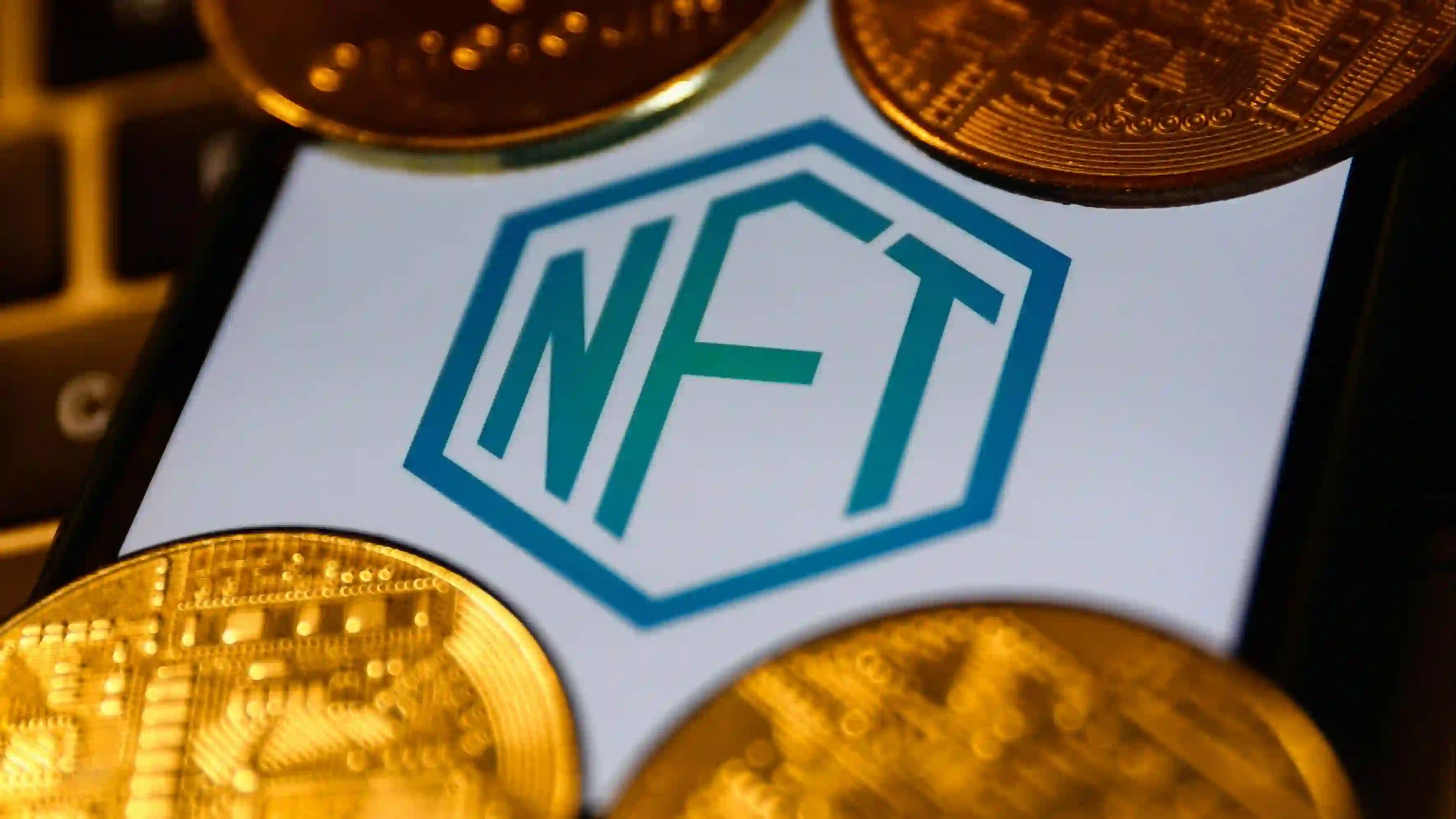In the not-so-distant past, Non-Fungible Tokens, or NFTs, emerged as a groundbreaking phenomenon within the cryptocurrency landscape. These unique digital assets, each with distinct characteristics and verified using blockchain technology, captured enthusiasts' and investors' imaginations. But now, is the market of NFT worthless?
The Rise and Fall of NFTs
Unlike traditional cryptocurrencies such as Bitcoin or Ethereum, NFTs offer a novel way to represent ownership and provenance of digital items, ranging from digital art to in-game collectibles and real-world assets. The pinnacle of non-fungible tokens' popularity was witnessed during the heady days of 2021 and 2022. Celebrities, artists, and creators flocked to the NFT space, hoping to capitalize on the growing trend. At the height of the boom, collectors were willing to shell out millions of dollars for these unique digital assets, creating headlines and setting the stage for a revolution in digital ownership and monetization. During this period, the market witnessed astronomical trading volumes, with August 2021, in particular, standing out as a record-breaking month, with a monthly trading volume reaching a staggering $2.8 billion. Non-fungible tokens have become a financial asset and a cultural phenomenon, sparking debates, discussions, and excitement within the crypto community and beyond.
The Current State of the NFT Market
Fast forward to the present, and the landscape of the NFT market has undergone a remarkable transformation. The euphoria that once surrounded NFTs has given way to a more somber reality. Today, websites that were once enthusiastic about NFTs warn individuals to exercise caution when dealing with these digital assets. The question on everyone's minds: What happened to the market? In a recent report, dappGambl, a crypto gambling website, sheds light on the current state of the NFT market worthless. The data they present is nothing short of surprising. The once-burgeoning market for NFTs has entered a bearish phase, characterized by a pessimistic outlook on the future value of numerous non-fungible token projects. Collectors, speculators, and investors have adopted a more cautious approach, wary of the market's challenges.
The Alarming Decline in Popularity
One of the most alarming findings from dappGambl's report is that a significant portion of NFTs has become worthless. Of the 73,257 collections examined, 69,795 have a market cap of zero Ether (ETH), Ethereum's native cryptocurrency. This stark statistic translates to 95% of collections currently held by individuals with investments with little to no perceived value. Millions of people who once invested in collections now hold assets that may have lost their entire market value. The implications of this revelation are profound, not only for individual investors but also for the broader NFT ecosystem. The decline in popularity is further underscored by many prominent non-fungible token collections' struggle to maintain demand. Even collections listed on platforms like CoinMarketCap, typically associated with high visibility and trading activity, face challenges, with 18% having a floor price of zero. We will delve deeper into dappGambl's extensive study and explore the factors contributing to this sharp decline in value. PlasBit has always recommended being cautious and avoiding investments in NFTs on our social media channels like X. NFT’s technology has still not proven itself in real world use cases, and constantly with that, the market value will keep declining in the long term.
Unveiling the Research Findings
To truly grasp the gravity of the current state of NFTs, it's essential to understand the rigorous research conducted by dappGambl. Their study aimed to provide a comprehensive view of the NFT market's health and resilience. By analyzing a vast dataset consisting of 73,257 collections, dappGambl sought to shed light on the harsh realities of the NFT worthless ecosystem. This ambitious study encompassed many collections and integrated data from reputable sources such as CoinMarketCap and NFTScan.
The Shocking Revelation: 95% of NFTs Worthless
The most shocking and sobering revelation to emerge from dappGambl's research was the sheer number of NFTs that are currently deemed worthless. Out of the extensive pool of NFT collections examined, 69,795 were found to have a market capitalization of zero Ether (ETH). This statistic translates to 95% of NFT collections having little market value. The implications of this revelation are far-reaching. It suggests that most individuals holding Non-fungible tokens are essentially clutching digital assets with no perceivable worth in the current market. The psychological and financial impact on these investors must be considered. As we delve deeper into this chapter, we will explore the reasons behind the devaluation of NFTs, investigate the challenges prominent collections face, and contemplate the potential consequences for the broader NFT worthless ecosystem.
The Struggle of Prominent NFT Collections
While dappGambl's research focused on a broad spectrum of NFT collections, it also scrutinized the most prominent ones listed on platforms like CoinMarketCap. It was a crucial aspect of the study, as it aimed to assess whether even the most highly recognized NFT collections were immune to market challenges. Surprisingly, the data revealed that 18% of the top NFT collections identified by CoinMarketCap had a floor price of zero. This finding implies that a significant portion of even the most prestigious collections is grappling with maintaining demand and value. It underscores that the NFT market's challenges are pervasive and extend beyond lesser-known collections.
NFT Market Analysis
As we continue our exploration of the landscape, it becomes evident that a significant discrepancy exists between NFT valuations and the actual state of the market. The initial enthusiasm and vitality that characterized the boom gave way to a more sobering reality. Many NFTs were initially valued at astronomical sums, sometimes reaching millions of dollars. However, dappGambl's research and other market observations reveal that these valuations often do not align with the actual value of these digital assets. In essence, the market experienced a period of speculative pricing, where the perceived value of non-fungible tokens was detached from their actual trading history and demand. This discrepancy has profound implications for collectors and investors who may have entered the NFT space expecting quick and substantial returns. It also highlights the speculative nature of the NFT worthless market, where assets were often overvalued, leading to inflated expectations.
The Current Trading Volume and Its Significance
Examining the current trading volume and its significance is crucial to gaining a more holistic view of the NFT market. Unlike cryptocurrencies' prices, DappGambl's report highlights a substantial reduction in the trading volume of NFTs compared to the market's peak in August 2021. As of the latest data, the weekly trading volume has plummeted to a mere $80 million, representing just 3% of the peak trading volume. This sharp decline in trading volume is emblematic of a broader trend, a decreased interest, and engagement with non-fungible tokens. The market's once-high liquidity has evaporated, contributing to a sense of caution among participants.
The Bear Market and Its Impact
The NFT market's transition into a bearish phase has significant implications for its stakeholders. A crypto winter is characterized by a pessimistic sentiment and a lack of confidence in the market's future. While the broader cryptocurrency market has witnessed its share of bear markets, the challenges faced by the NFT ecosystem are unique. Buyers have become increasingly skeptical in this bear market, and sellers face challenges finding interested parties. The uncertainty surrounding the market's direction has led to a cautious approach, with many participants choosing to observe rather than actively participate. The impact of this bear market extends beyond the individual collectors and investors. It affects the broader community, including artists, creators, and platforms that have built their businesses around non-fungible tokens. Despite the bear market period involving the price drop, PlasBit still advises against reckless NFT investments. Any asset to have real value must bring real-world utility or profit; in the case of NFTs, this is rarely the case.
Worthless NFTs: A Closer Look
In our quest to understand the current state of the NFT market, we must delve deeper into the concept of NFT worthlessness. As revealed by dappGambl's research, an alarming 95% of NFT collections are currently deemed worthless. But what does the term "worthless" entail within NFTs? An NFT's worthlessness signifies that the market cap and, by extension, the perceived value of the digital asset are effectively zero. In other words, NFT holders essentially possess assets that hold no tangible market value, rendering them untradeable and unsellable. This revelation casts a shadow over the broader ecosystem, leaving collectors, investors, and creators with questions about the long-term viability of these digital assets. It also challenges the conventional understanding of value within the context of NFTs.
The Enormous Supply of Unsold NFTs
While the worthlessness of NFTs is a significant concern, it is not the only challenge facing the market. Another compelling aspect of dappGambl's findings is the substantial supply of unsold NFTs. Many collections have failed to find buyers beyond the worthlessness of many non-fungible tokens. According to dappGambl's analysis, only 21% of the collections examined were entirely spoken for, indicating that four out of every five NFTs remain unsold. This stark reminder of the oversupply of NFTs underscores the speculative and volatile nature of the market. It also suggests that the demand for NFTs has waned significantly compared to the vitality of previous years.
The Challenge of Pricing NFTs
One of the enduring challenges within the NFT market is the accurate pricing of these unique digital assets. The boom saw NFTs valued at staggering amounts, sometimes in the millions of dollars. However, as dappGambl's research highlights, these valuations often do not align with the actual trading history and demand for non-fungible tokens. Unlike investing in cryptocurrencies, in the NFT market, there is a disconnection between perceived and intrinsic value that compounds the challenge of pricing NFTs. Many NFTs were initially priced based on speculative beliefs rather than concrete utility or demand. As a result, the market has experienced a correction, with assets being repriced to reflect their actual worth.
Beyond Worthlessness: The NFT Future

As we navigate the tumultuous waters of the NFT market, it becomes increasingly clear that the future of NFTs may hinge on their ability to transcend their current status as collectibles. While the worthlessness of many NFTs has raised concerns, it also presents an opportunity for the ecosystem to evolve. One key aspect of this evolution is the imperative need for actual use cases. NFTs must offer tangible utility beyond being digital art or collectibles to regain their relevance and value. This utility can take various forms, such as in-game assets, token-gated access to events, or links to physical products. These use cases enhance the NFT's value and mutually benefit their owners. Experts, including Vlad Hategan of dappGambl, emphasize the importance of NFTs with clear use cases. These use cases attract genuine interest and create a narrative around the NFT, making it more appealing to potential buyers and investors.
NFTs with Tangible Utility
To illustrate the potential of non-fungible tokens with real utility, we can examine case studies within the ecosystem. For instance, NFTs have been utilized to preserve cultural heritage, enabling the digital representation and protection of historical artifacts and artworks. These NFTs are more than mere collectibles; they are guardians of cultural history. The gaming industry has also embraced NFTs as in-game assets, allowing players to own and trade their in-game items. These NFTs offer a practical application of blockchain technology within the gaming space, unlocking new revenue streams for developers and providing players with actual ownership. Moreover, NFTs have ventured into real estate, where digital tokens represent ownership of physical properties. This innovative approach can disrupt the traditional real estate market by making property transactions more accessible and efficient. These case studies serve as beacons of hope in the NFT landscape, demonstrating that NFTs can provide value and utility beyond their status as collectibles.
The Evolution of NFTs
The evolution of NFTs is about embracing real use cases and adapting to changing market dynamics. Non-fungible tokens must grow and adapt to the demands and expectations of their users. As the market matures, NFTs are shifting toward offering more than just ownership; they are becoming vehicles for engagement, participation, and interaction within digital ecosystems. This evolution requires NFT projects to listen to their communities, innovate, and constantly improve their offerings.
Environmental Considerations
As we continue our journey into the evolving world of NFTs, it's essential to address a pressing concern: the environmental impact of this burgeoning technology. While NFTs are often celebrated for their innovative use of blockchain technology, they are not exempt from contributing to the broader discussion on sustainability and carbon emissions. NFTs, like other blockchain-based technologies, require significant computational power for their creation, verification, and transaction processing. The process of minting NFTs involves complex cryptographic calculations and consumes energy. This energy consumption, in turn, leads to the release of carbon emissions into the atmosphere. Recent data reveals the energy required to mint NFTs, especially on blockchains like Ethereum, can be substantial. It is estimated that the energy cost of minting a single NFT is equivalent to the yearly energy emissions of thousands of homes or automobiles.
The Call for Responsible NFT Creation
In response to the environmental concerns associated with NFTs, there is a growing call for responsible NFT creation. This movement advocates for more eco-friendly approaches to minting and trading NFTs, focusing on reducing energy consumption and carbon emissions. One proposed solution is the adoption of blockchain networks with lower energy footprints. These networks, often called "green" blockchains, prioritize energy efficiency and sustainability. By shifting towards such platforms, NFT creators can mitigate their environmental impact while still enjoying the benefits of blockchain technology. The NFT community is also exploring ways to offset their carbon emissions through carbon credits and tree-planting initiatives. These efforts balance the environmental ledger by contributing to conservation and sustainability projects.
The Path Forward: Balancing Innovation and Responsibility
The environmental considerations surrounding NFTs highlight the delicate balance between innovation and responsibility. While non-fungible tokens have the potential to revolutionize digital ownership and content monetization, their ecological impact cannot be ignored. The path forward for NFTs involves a concerted effort to embrace sustainable practices while continuing to innovate. It includes exploring alternative blockchain solutions, adopting eco-friendly minting processes, and actively participating in environmental initiatives.
NFTs and the Bursting Bubble
While we've explored the transformative potential, challenges, and responsible avenues for NFTs in the previous chapters, it's essential to confront a harsh reality: the formed NFT bubble and the consequences of its bursting.
The Bursting of the NFT Bubble
The meteoric rise of NFTs captured imaginations worldwide. Anyone could mint an NFT and find a willing buyer, often at exorbitant prices. Digital artists, celebrities, and entrepreneurs flocked to this new frontier, eager to capitalize on the frenzy. However, as we've uncovered, the euphoria surrounding NFTs masked an underlying fragility. The NFT bubble grew unsustainable, fueled by speculative fervor rather than genuine demand. Once valued in the millions, non-fungible tokens now languish, their worth plummeting to zero. This bursting bubble has left many collectors and investors with assets that hold no value, and it has raised questions about the sustainability of NFT marketplaces that facilitated such excessive speculation. The rapid rise and fall of NFT prices have left a trail of disillusioned participants who may be wary of future ventures in the space.
Lessons Learned
The NFT bubble is a stark reminder of the dangers of irrational exuberance and unchecked speculation. It highlights the importance of genuine utility and responsible creation within the NFT ecosystem. Collectibles, whether digital or physical, have always been subject to market fluctuations. However, the NFT bubble's intensity was unprecedented, attracting attention and scrutiny from regulators, environmental advocates, and skeptics. It underscores the need to consider the broader implications of emerging technologies.
The Importance of Real-World Use Cases
One of the fundamental pillars of NFT evolution is the incorporation of real-world use cases. Non-fungible tokens must find practical applications that extend beyond digital collectibles. It involves leveraging blockchain technology to address real-world problems and provide previously unattainable solutions. Examples of NFT use cases with real-world impact include:
Cultural Preservation: NFTs can be used to preserve and protect cultural heritage, ensuring that valuable artifacts and artworks are digitally archived and accessible to future generations.
Gaming and Entertainment: NFTs have the potential to revolutionize the gaming industry by enabling actual ownership of in-game assets, creating player-driven economies, and enhancing player engagement.
Real Estate: NFTs can streamline the real estate market by simplifying property transactions and reducing administrative overhead, making property ownership more accessible.
Environmental Initiatives: NFTs can be harnessed to support environmental causes, such as carbon offsetting and conservation efforts, by donating proceeds from NFT sales to these initiatives.
The Path Forward
The bursting of the NFT bubble is not the end of the story but a critical juncture in its evolution. It's an opportunity for the NFT community to reflect, learn, and adapt. The path forward involves reevaluating the role of non-fungible tokens, emphasizing their practical utility, addressing environmental concerns, and fostering responsible practices. NFTs still possess the potential to revolutionize digital ownership, empower creators, and create new economic opportunities. However, this potential can only be realized through a concerted effort to build a sustainable and value-driven NFT ecosystem. In conclusion, the NFT bubble's burst is a sobering moment in the NFT worthless journey. It serves as a reminder that the road to innovation is paved with challenges, and success requires a commitment to responsible and purpose-driven technology. PlasBit will not offer the ability to trade and hold NFTs on its platform because, as much as we support blockchain technology as a tool to improve certain aspects of people's lives for the better, we believe that most NFTs have no real value and that most collections of NFTs offer misleading and unachievable promises.







